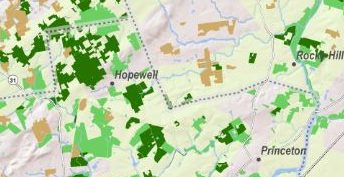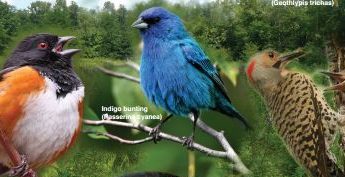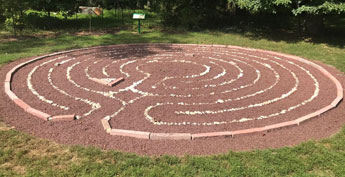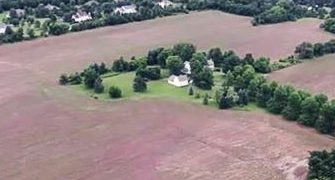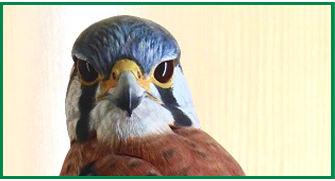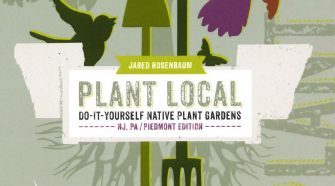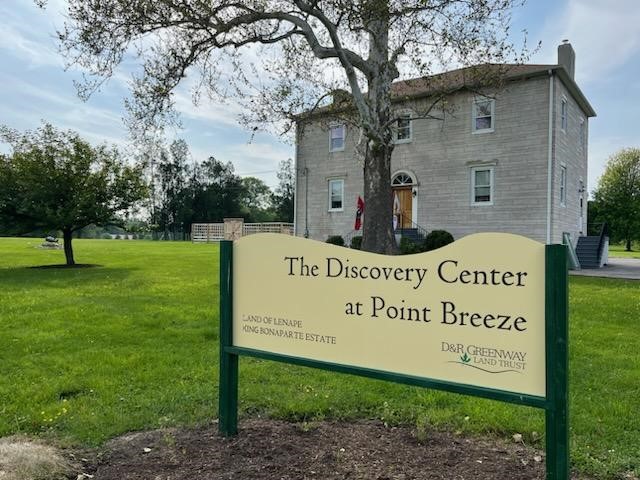Puhwem Corn Demonstration with
The Three Sisters Indigenous Garden Method
Saturday, August 10
11:00 am – noon
Brooke McMinn, Lead Gardener at the Point Breeze Discovery Center
***********
Lenape Storytelling
A Family Friendly Event
Monday, August 12
1:00 pm – 3:00 pm
To register for these events, please email info@drgreenway.org or call 609-924-4646.
While admission to these events are free, a suggested $10 donation is greatly appreciated and can be made at drgreenway.org
DIRECTIONS: GPS to Divine Word Missionaries, 101 Park Avenue, Bordentown
Puhwem Corn Demonstration with The Three Sisters Indigenous Garden Method
Walk around the Historic Garden at Point Breeze and learn about the heritage crops grown this year.
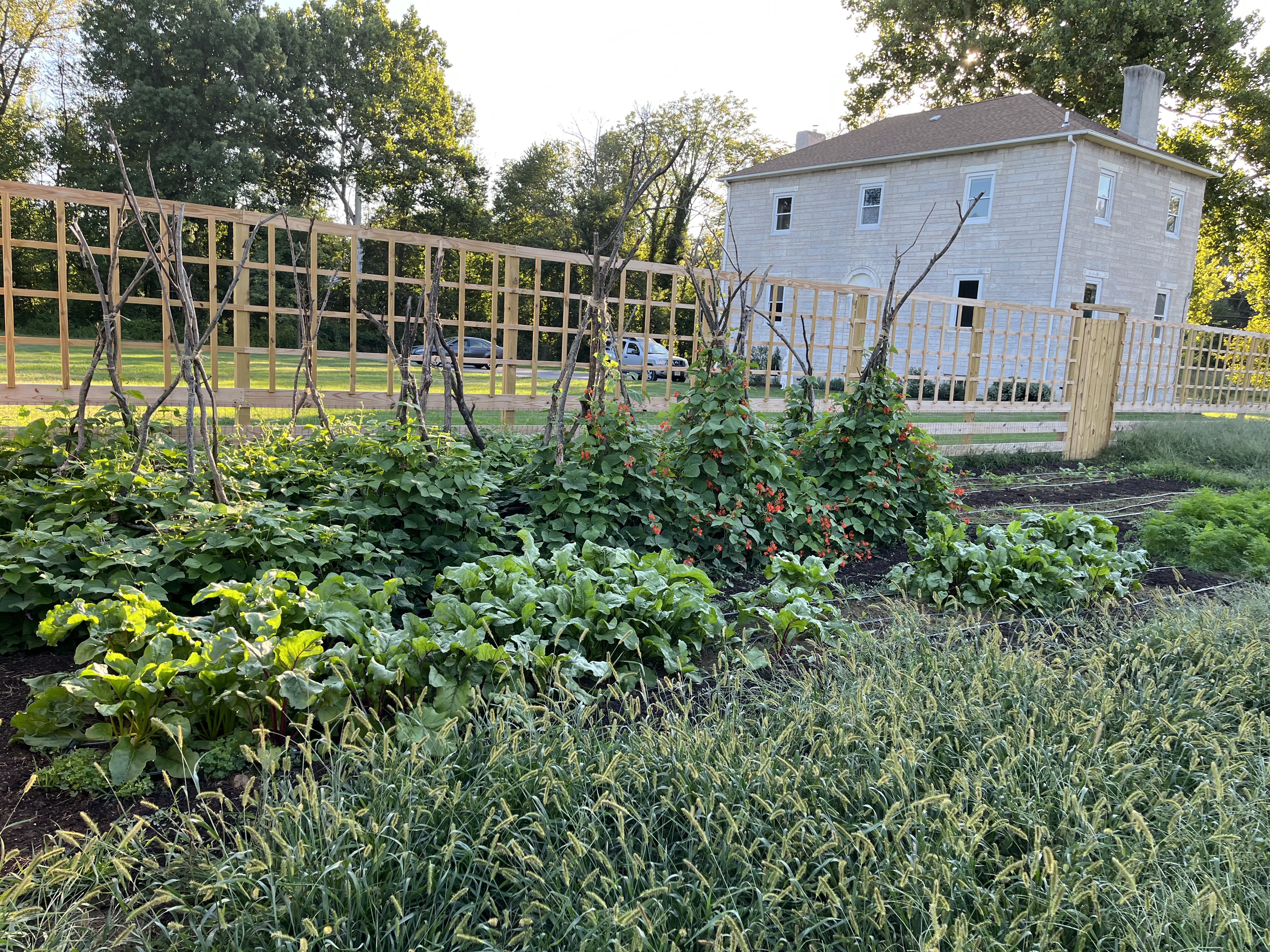 Varieties were chosen to reflect those crops grown by Joseph Bonaparte’s gardener and those crops planted by indigenous peoples. Learn about indigenous crop ceremonies and the agricultural practice of Native peoples.
Varieties were chosen to reflect those crops grown by Joseph Bonaparte’s gardener and those crops planted by indigenous peoples. Learn about indigenous crop ceremonies and the agricultural practice of Native peoples.
Puhwem Corn: This Lenape corn is one of the oldest known native varieties, stewarded by Nora Thompson Dean (Touching Leaves Woman) in the Lenape/Delaware community in Oklahoma. There, Dean (1907-1984) worked to preserve the seeds and cultures of the Lenape community. Traditionally, all parts of Puhwem’s plant are used, but this corn is most famous for being used to make cornmeal and dumplings. Click HERE to watch a video as the Ramapough Lenape Turtle Clan are reconnected with their ancestral seed stock of Puhwem corn.
While admission to the event is free, a suggested $10 donation is greatly appreciated and can be made at drgreenway.org
All donations go towards events and exhibits showcased at the Discovery Center at Point Breeze
 Indigenous Crops – The Three Sisters – Perhaps one of the most infamous methods of Native American gardening is the Three Sisters technique. The Three Sisters – squash, corn, and beans – are grown interplanted with one another, supporting each other and providing greater yields when planted together than when planted alone. This technique dates back at least 1,000 years, having moved from South & Central America into North America over the past millennium. It is prevalent throughout many nations, though the Haudenosaunee are primarily known for calling them “Three Sisters.”
Indigenous Crops – The Three Sisters – Perhaps one of the most infamous methods of Native American gardening is the Three Sisters technique. The Three Sisters – squash, corn, and beans – are grown interplanted with one another, supporting each other and providing greater yields when planted together than when planted alone. This technique dates back at least 1,000 years, having moved from South & Central America into North America over the past millennium. It is prevalent throughout many nations, though the Haudenosaunee are primarily known for calling them “Three Sisters.”
The Sisters support one another as follows: Corn provides a stalk for beans to climb, and in turn beans provide Nitrogen to the soil that benefits the roots of corn and squash. Squash provides ground cover that shades the soil, keeping weeds suppressed and retaining soil moisture. Interplanted crops are also less prone to pests than mono-planted crops, use nutrients more efficiently, and are shown to produce more fruit.
Corn is planted first, placing 4-6 seeds or transplants into a low mound. Once the corn is approximately 6 inches tall, beans are planted in a circle around the corn stalks, evenly spaced. About a week later, squash is seeded at the base of the mound, also arranged circularly around the beans and corn.
In addition to Puhwem Corn, we are growing the following native crops in the Point Breeze Historic Garden:
- Scarlet Runner Bean: One of the oldest known runner beans, this variety was documented in North America as early as 1735. Bright scarlet flowers give way to huge seed pods that can be eaten fresh or dried and cooked after maturity.
- Blue Shackamaxon Bean: Named for a Lenape fishing and meeting place in what is now known as Philadelphia, this pole bean from pre-1800 grows lovely blue-black beans in mottled pods for drying and cooking.
- Sèhsapsink Flint Corn: Stewarded by Nora Thompson Dean and also known as Oklahoma Delaware Blue Flint Corn, this variety is important to the Lenape people, whose ancestral homeland our garden resides upon. The beautiful blue-black kernels can be ground for flour, grits, or a traditional cornmeal mush called sapan.
- Crookneck Golden Early Squash: Summer squash originated in Mesoamerica before migrating up to North America under the stewardship of Indigenous peoples. This variety was grown long before Columbus arrived here, most commonly in Appalachia. The fruit can be sautéed, roasted, and stewed.
- Cymling Squash: Also known as Pattypan Squash, this native fruit is just as old as Crookneck Golden, dating back to pre-Columbus America. These round squashes are delicious stuffed, roasted, or stewed.
- Cheese Pumpkin: Created from Native American cultivars, this pie pumpkin was exceedingly popular in the 1800s. By the 1970s the Cheese Pumpkin was rapidly vanishing from markets in favor of more cannable varieties, so a group of seed stewards from Long Island banded together to revive the gourds’ popularity.
- Sunchoke (Jerusalem Artichoke): This ‘artichoke’ is in fact a member of the sunflower family (Helianthus), grown for their starchy, potato-like roots. Originating from Central North America, sunchokes are excellent fresh or cooked, much like a carrot.
References & Resources:
https://www.almanac.com/content/three-sisters-corn-bean-and-squash
https://www.nal.usda.gov/collections/stories/three-sisters
Seed Savers Exchange | Southern Exposure Seed Exchange | Monticello Shop | True Love Seeds
Rob Flory grew up in Princeton, NJ and earned his BS in Applied Physics from Stockton State College in 1985. He has worked as a farmer and internship coordinator at Howell Living History Farm, a facility of the Mercer County Park Commission, since 1989. Rob loves empowering young people with practical skills that foster self-determination and self-sufficiency. He loves open spaces as the source of all basic resources for life, as well as a place for wonder and awe and a venue for mindfulness exercises. Rob lives in Hopewell Township with his wife Pam, the beloved gardening teacher of Princeton Day School, and their 2 teenaged children. His volunteer activities have included the Peace Corps, coaching with Hopewell Valley Recreation and Timberlane Middle School wrestling, Let Me Run, NOFA-NJ organic standards and certification boards, Battleship Massachusetts Museum, and Hopewell Elementary School Garden Club.
Brooke McMinn is a botanist who specializes in exploring intersections of plant ecology and human society. As a consultant with D&R Greenway, Brooke oversees the Historic Garden at Point Breeze and assists with other conservation design and mapping projects. A graduate of Rutgers University’s Department of Plant Science and former plant breeding researcher there, Brooke has served as Executive Director for the NJ Agricultural Society, President of the Environmental Education Association of Alabama, Director of Education and Visitor Experience at Birmingham Botanical Gardens, and Horticultural Agent for Rutgers Cooperative Extension of Burlington County.
Lenape Storytelling, A Family Friendly Event
Join us for an enchanting afternoon at Point Breeze as Chief Bluejay shares traditional Lenape stories.
Bluejay advised D&R Greenway on messaging for the Discovery Center. She is Chief, Keeper of Culture, Storyteller and Public Speaker for the Lenape Nation of Pennsylvania. Her intention is “to educate the public on the Lenape Nation, stressing how we should take care of Mother Earth and letting them know we are still here!” Join us to hear stories about the First People of Point Breeze. It’s a storytelling experience you won’t want to miss.
While admission to the event is free, a suggested $10 donation is greatly appreciated and can be made at drgreenway.org
All donations go towards events and exhibits showcased at the Discovery Center at Point Breeze
Visitors will also be able to purchase wood carvings for sale by artist Jane “Walkingstick” Roop, of Lenape descent, as well as walking sticks and spirit sticks, for $35 to $225, with a portion of the sales supporting programs at the D&R Greenway’s Discovery Center at Point Breeze.
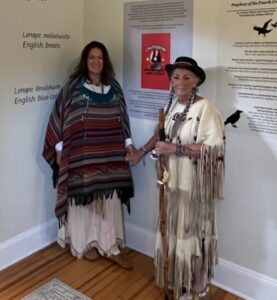
Bluejay, aka Barbara Michalski, was given the name by her grandfather, Bill Thompson, late Chief Whippoorwill of the Unalachtigo (people near the ocean) Tribe of the Turkey Clan. She is a member of Lenape Nation of Pennsylvania (LNPA), and she has immersed herself in the activities of the Nation. Bluejay is serving on the Tribal Council; she is the Tribal Secretary and one of the Storytellers of the Nation. Last year she was appointed Chief of Culture. She has been participating in educating the public by attending events or festivals in the Lenapehokink (Homeland of the Lenape). But most of all, Bluejay loves to teach children the history of the Lenape Nation through crafts, storytelling, and artifacts as she visits numerous area schools and children’s groups, such as the Boy and Girl Scouts and children camps. Bluejay has also been involved in environmental issues, particularly working for clean water and protecting our Earth Mother. Recently, there have been many requests on medicinal plants, and she has been working to learn more about the plant nation and did her first zoom presentation on this subject in November 2022. Bluejay attends Lenape Language class in Unami Dialect through LNPA via Zoom to help keep endangered language alive. Learn more about Bluejay HERE.
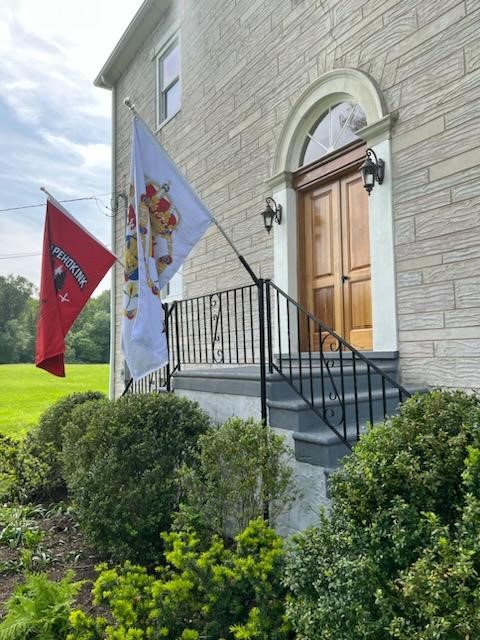
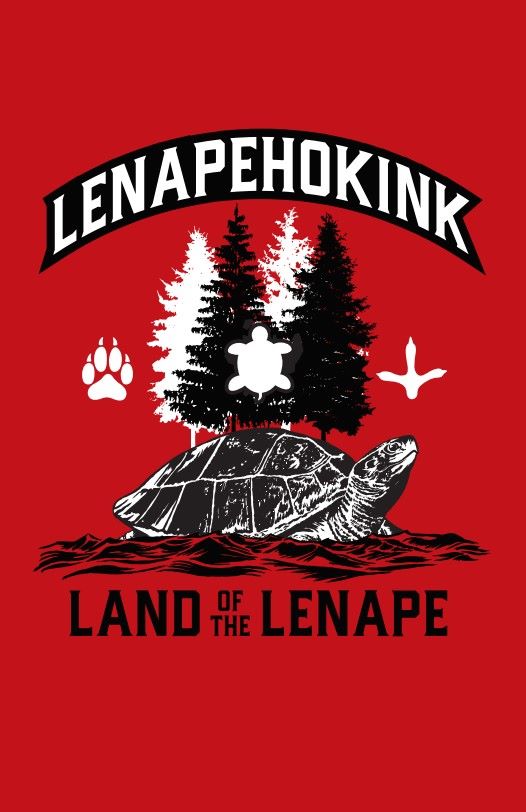
All are welcome to discovery!
####
About D&R Greenway Land Trust: D&R Greenway Land Trust is an accredited nonprofit that has reached a new milestone of over 22,000 acres of land preserved throughout central New Jersey since 1989. By protecting land in perpetuity and creating public trails, it gives everyone the opportunity to enjoy the great outdoors. The land trust’s preserved farms and community gardens provide local organic food for residents of the region—including those most in need. Through strategic land conservation and stewardship, D&R Greenway combats climate change, protects birds and wildlife, and ensures clean drinking water for future generations. D&R Greenway’s mission is centered on connecting land with people from all walks of life.
Visit our Facebook and Instagram pages and www.drgreenway.org to learn about the organization’s latest news and in-person and virtual programs. D&R Greenway Land Trust, One Preservation Place, Princeton NJ 08540. The best way to reach D&R Greenway staff is by sending an e-mail to info@drgreenway.org or by calling D&R Greenway at 609-924-4646.

